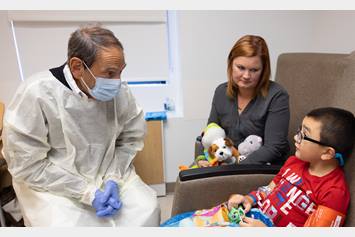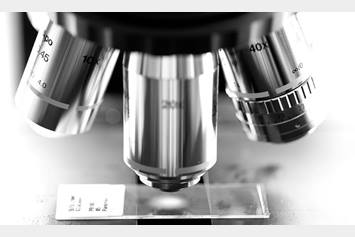Muscular Dystrophy
The muscular dystrophies, or MD, are a group of more than 30 genetic neuromuscular disorders, in which defects of muscle cause muscle weakness and difficulties in body movement and control.
What Is Muscular Dystrophy?
The muscular dystrophies, or MD, are a group of more than 30 genetic (passed down by parents) neuromuscular disorders, in which defects of muscle (not nerves) cause muscle weakness and difficulties in body movement and control. Each type of muscular dystrophy is passed on by a different gene, and they all have different courses. However, all of the disorders are always progressive (worsen over time), and always involve destruction and death of muscle fibers at some stage of the disease. MD can begin in infancy, childhood, or adulthood. However, those which start in early childhood are most severe.
Major Forms of Muscular Dystrophy
There are seven major types of muscular dystrophy that affect children and young adults:
What Are the Symptoms of Muscular Dystrophy?
Symptoms are different, depending on the type of muscular dystrophy. Every muscle in the body may be affected in some types. While, only certain muscles may be affected in others.
Symptoms may include:
- Muscle weakness that slowly gets worse
- Delayed motor skill development
- Difficulty controlling or using muscle groups
- Drooling
- Frequent falls or poor balance
- Decrease in muscle size
- Difficulty walking or delay in starting to walk
How Is Muscular Dystrophy Diagnosed?
- DNA blood test
- Muscle biopsy
- Electromyelogram (EMG)
- Clinical exam findings
How Is Muscular Dystrophy Treated?
Muscular dystrophy cannot be prevented. There is no specific treatment or cure for the disease. Care of those with muscular dystrophy is mainly focused on preventing and treating its complications, and improving the quality of life of affected children. Multiple pediatric specialists, including orthopedic surgeons, physical therapists, cardiologists, pulmonologists, nutritionists, and physical medicine specialists, make up the team that provides the necessary care to achieve this.
Each child is thoroughly evaluated and a treatment plan is determined based on their individual diagnosis and prognosis. Nationwide Children’s program has enabled our pediatric patients to live more comfortably, be more productive, and in many cases, live longer lives.



